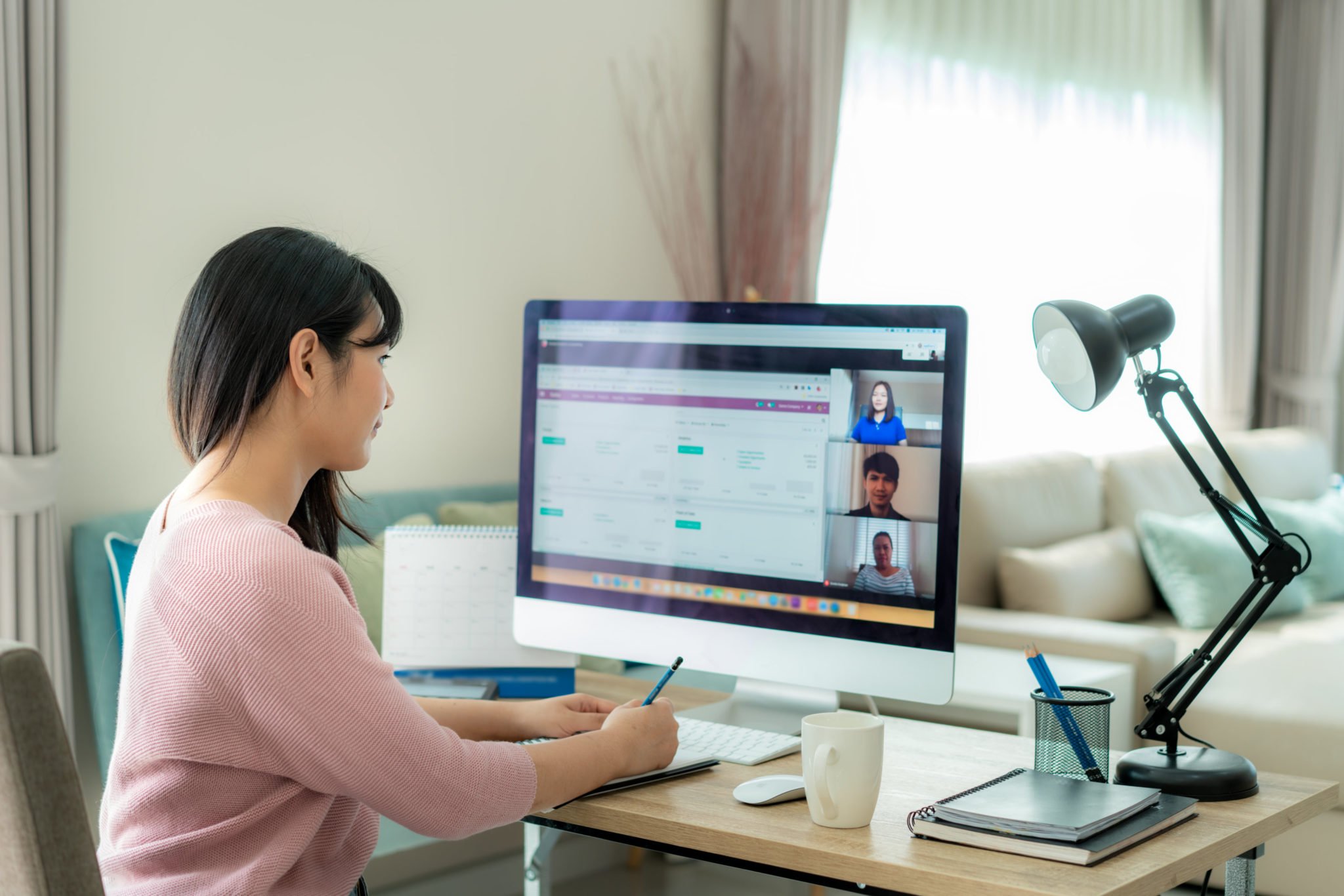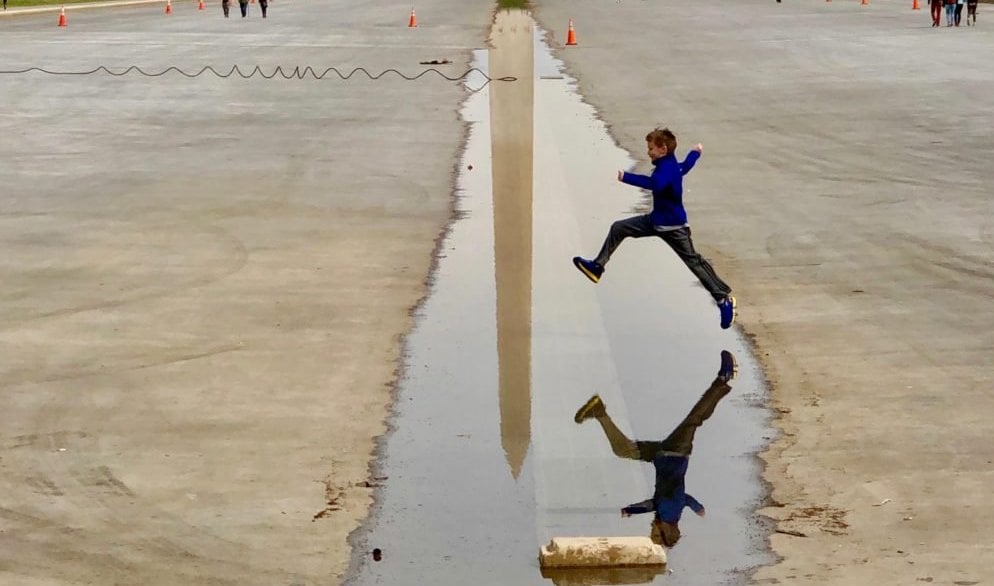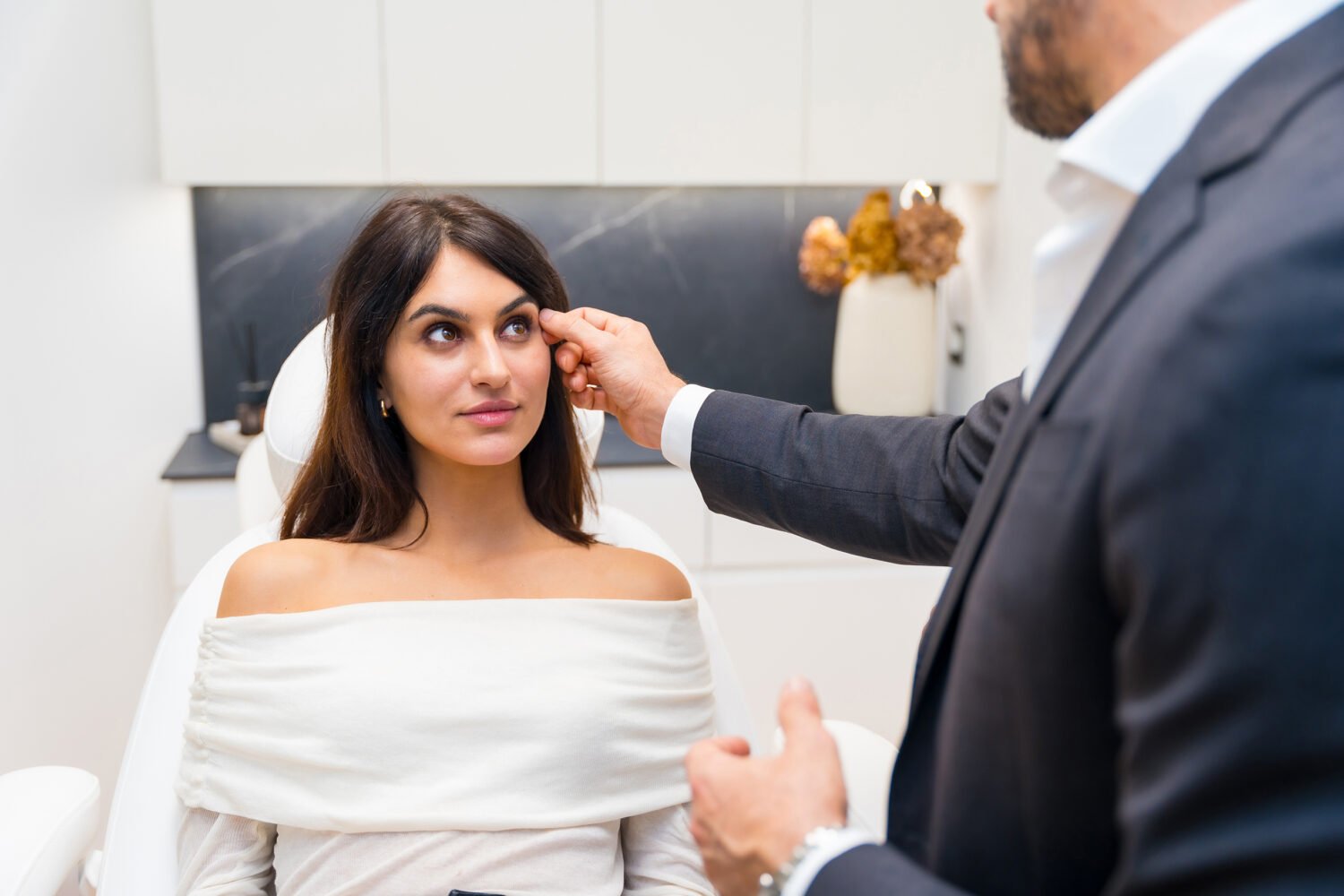About Coronavirus 2020
Washingtonian is keeping you up to date on the coronavirus around DC.
Many folks have now been working from home for close to two months, which means a lot of hours spent hunched over the kitchen table or on the couch staring at a screen. This can lead to back, neck, and shoulder pain, especially if you’re accustomed to sitting in an ergonomic chair or using a standing desk at your traditional office.
Aliyah Hatcher, who owns Pilates Center of Rockville, calls this slumped-over-the-computer stance the “sunken place.” When Hatcher isn’t teaching Pilates at her studio (which has both weekly live virtual classes and virtual private and semi-private lessons), she’s leading workplace wellness workshops. There she teaches folks about movements and ways to engage their bodies to combat stress, fatigue, pain, and tension while at work. Here, she shares four approaches to incorporate into your work-from-home routine to help keep your body healthy and pain-free:
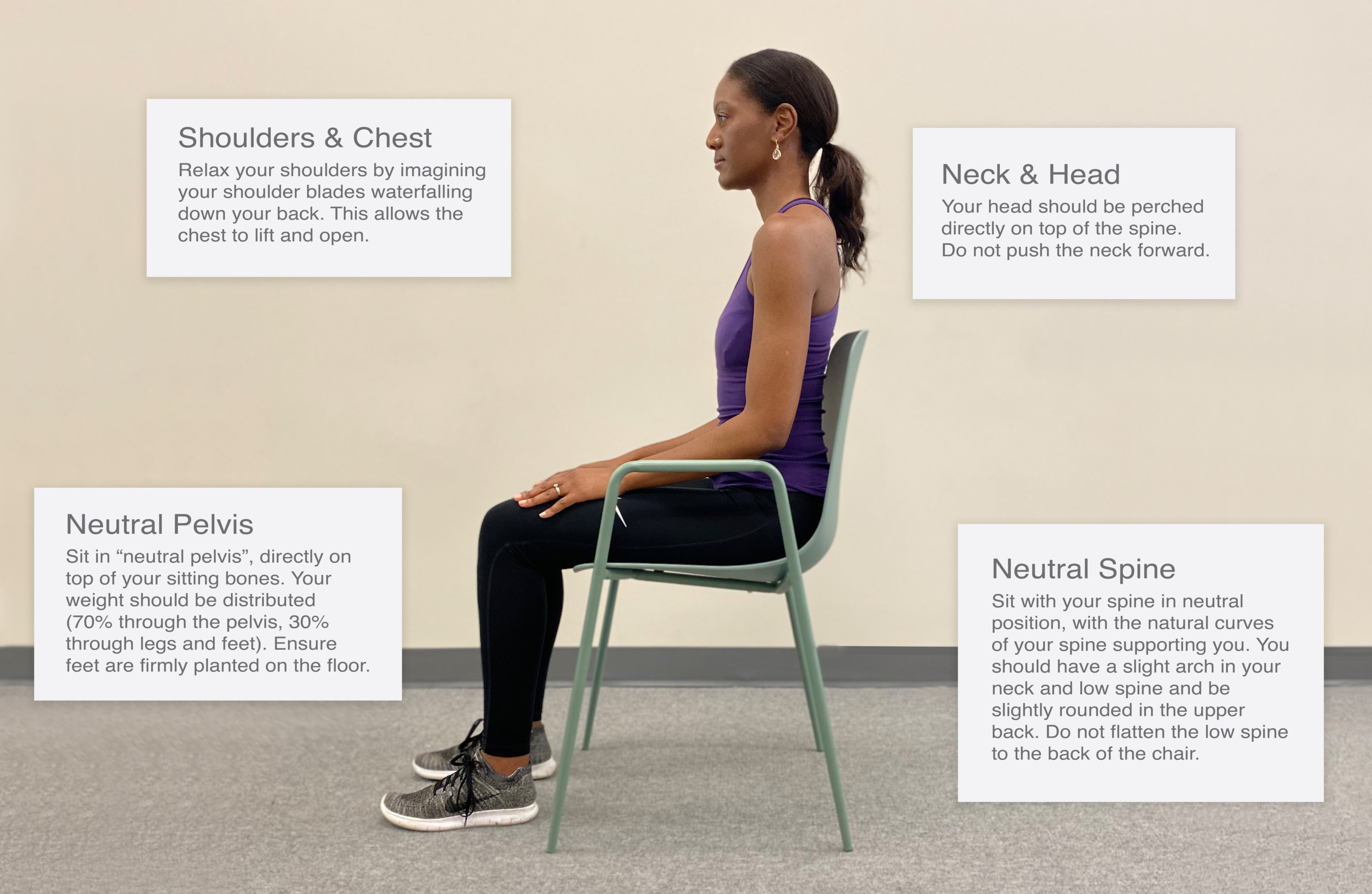
Practice “Healthy Sitting”
When sitting down to work, your feet should be planted firmly on the floor, with your spine in a neutral position, says Hatcher. There should be a slight arch in your low spine and neck, and your upper back should be slightly rounded. Don’t flatten your lower back against the back of the chair, she says, and place your head directly on top of your spine without pushing your neck forward. Don’t forget to relax your shoulders, either—you can do this by “imaging your shoulder blades waterfalling down your back,” says Hatcher.
She also suggests sitting in a “neutral pelvis” position on your chair while working. This means you should be sitting directly on top of your pelvic bones, with your weight distributed 70 percent through your pelvis and 30 percent through your legs and feet. Hatcher recommends watching this video to help you find your “neutral pelvis” position.
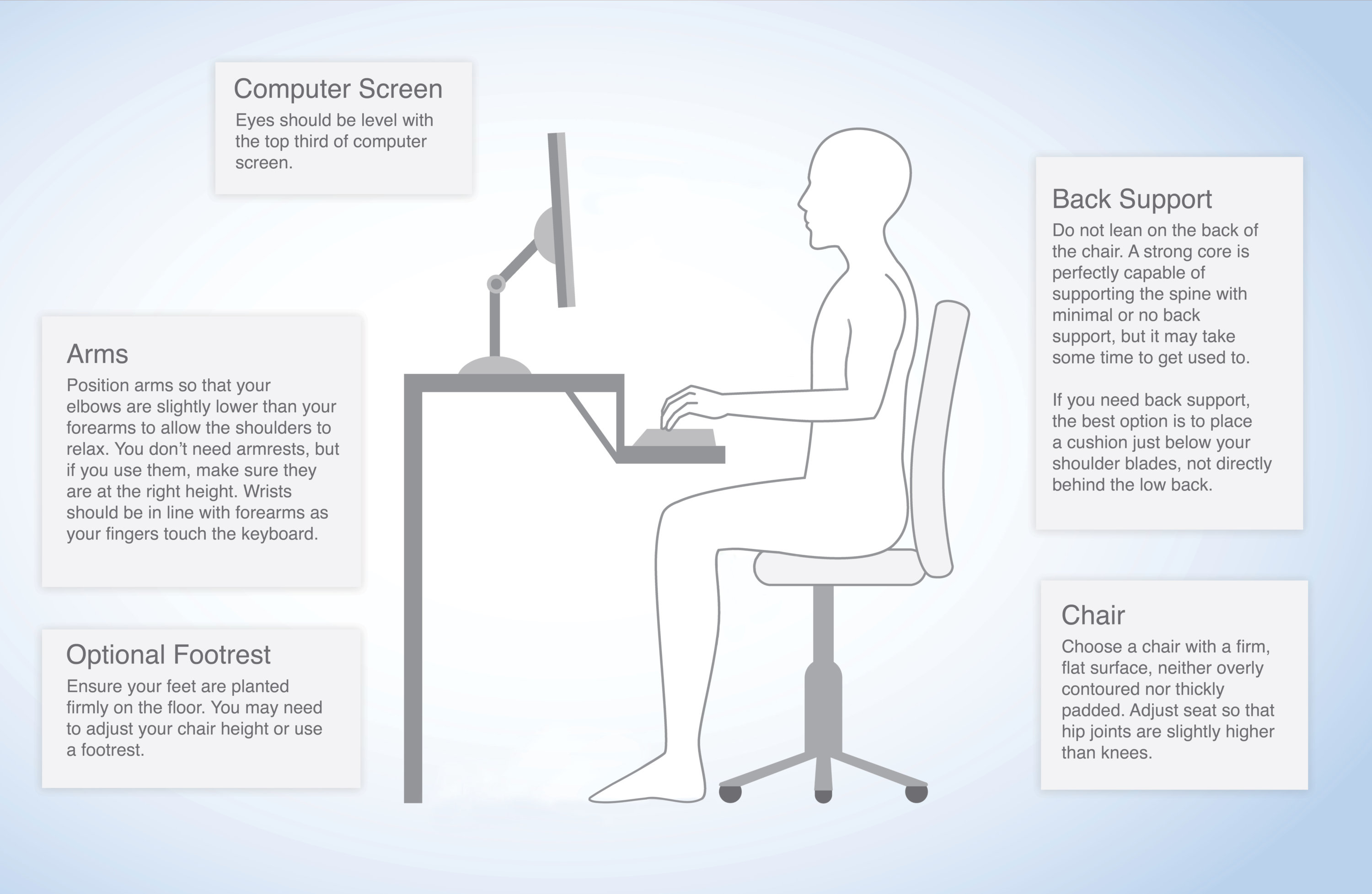
Properly Situate Your Body Within Your Workspace
Select a chair that has a firm, flat surface that isn’t thickly padded or overly structured, says Hatcher, and you should adjust the seat so that your hip joints are slightly higher than your knees. And don’t lean back on the chair, she says—while it may take some getting used to, if your core is strong enough, you should be able to support the spine without leaning back. If you really need the support, however, Hatcher recommends putting a pillow directly beneath your shoulder blades, not the lower back.
When sitting, make sure your feet are planted firmly on the floor (lower your chair or place a book beneath your feet if necessary). Make sure that your eyes are looking straight ahead and are level with the top third of your computer screen, says Hatcher; your elbows should be slightly lower than your forearms to make sure your shoulders are relaxed. Keep your wrists in line with your forearms.
Try to Avoid These Common Mistakes
If possible, don’t sit on your couch, bed, or floor while you work, suggests Hatcher, as it will cause you to take on that “sunken place” form. Likewise, don’t work with your computer in your lap, she says—it’s bad for your neck and causes pressure at the base of your skull. The best work-from-home setup is to sit in a chair at a table.
And don’t forget to move, says Hatcher. She recommends taking an hourly break to stretch your legs, whether that means eating lunch, taking a walk, or simply going up and down the stairs.
Incorporate Daily Movements
“Healthy movement is key for the body and mind,” says Hatcher. To make sure you’re not sedentary all day, she recommends incorporating the moves below into your daily schedule. Bonus: They don’t require any equipment and can be done anywhere.
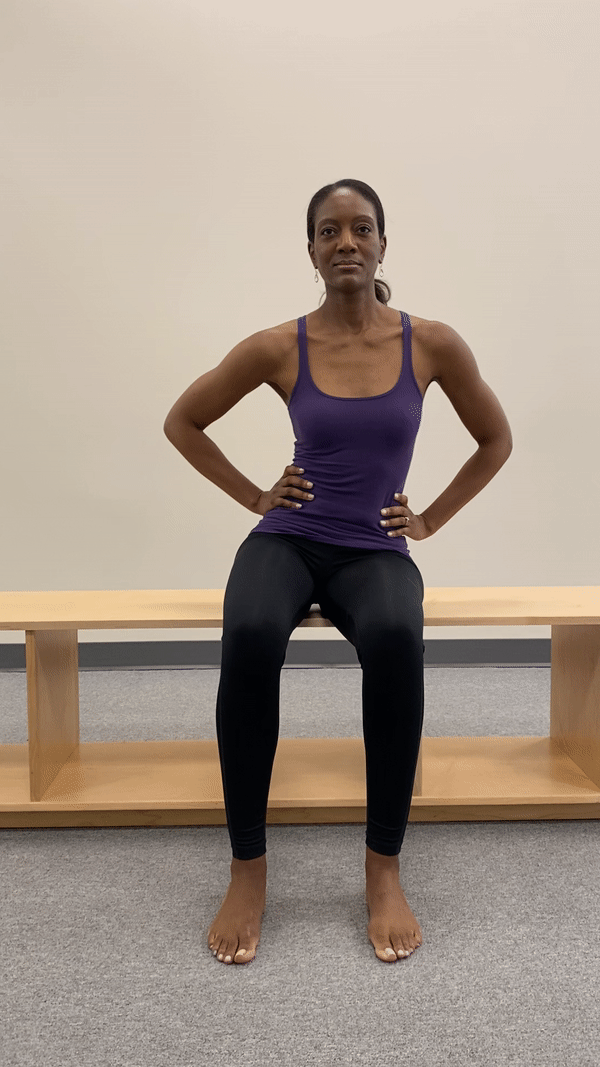
Walking Sitting Bones
This move will warm up your lower back muscles and loosen the muscle around your spine and pelvis, says Hatcher.
To begin, sit toward the front edge of a firm seat, with your feet firmly planted on the floor. Put your hands around the top ring of your pelvis and, without moving your feet, lift your right sitting bone off the seat. The right side of your pelvis should lift and your lower spine should bend slightly. Lower your right sitting bone and repeat this movement with your left sitting bone. Continue to alternate this move and “walk” your sitting bones as if you’re walking with your feet.
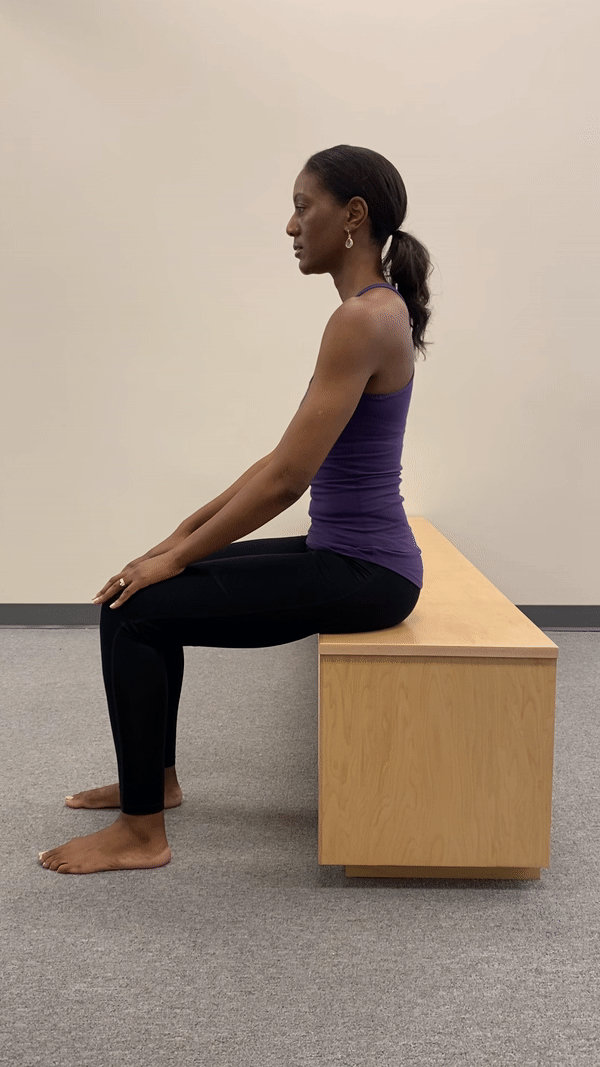
Rocking Horse
Hatcher calls this move “the back saver,” as it mobilizes the pelvis and lower spine to help you find a neutral position.
Begin by sitting on the front edge of a firm seat with both of your feet planted firmly on the floor. Place your hands on the tops of your thighs. Imagine your sitting bones are like the rockers on a rocking horse, and rock your pelvis to the front of your sitting bones. Then rock your pelvis to the back of your sitting bones. While doing this, make sure your movement starts from your sitting bones and not your lower back. Continue to rock back and forth.
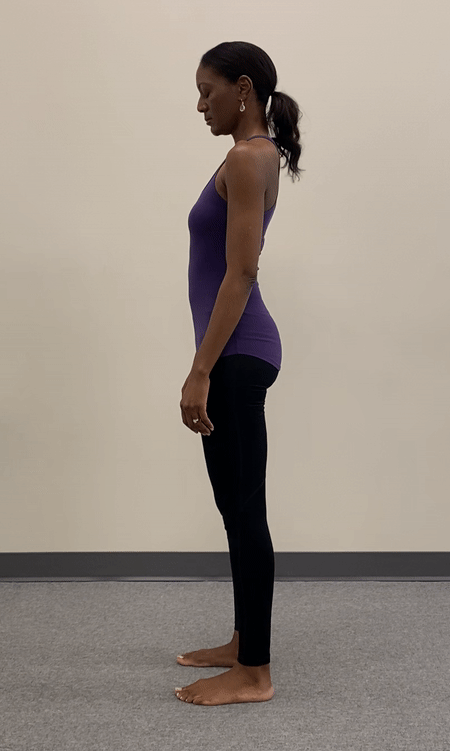
Standing Roll Down
This move stretches the back of your body via your glutes, hamstrings, calves, and back muscles, and helps to engage what Hatcher calls your “internal lift” by using your abs.
Begin by standing with your legs hip-width apart and parallel to one another. Starting at the base of your skull, roll your spine down vertebrae by vertebrae. Keep your legs straight and let the spine “pour” out of the top of the pelvis, says Hatcher, while simultaneously scooping your abs into the front of your spine. When you reach the bottom of your spine, hold for three-to-five deep breaths. Then press your feet into the floor, activate your leg and lower belly muscles, and start to roll back up. Do this by using your lower glutes to curl your sitting bones underneath you and scooping your abs in. When you reach the top, lift your chest, neck, and skull and let your shoulder blades waterfall down your back.
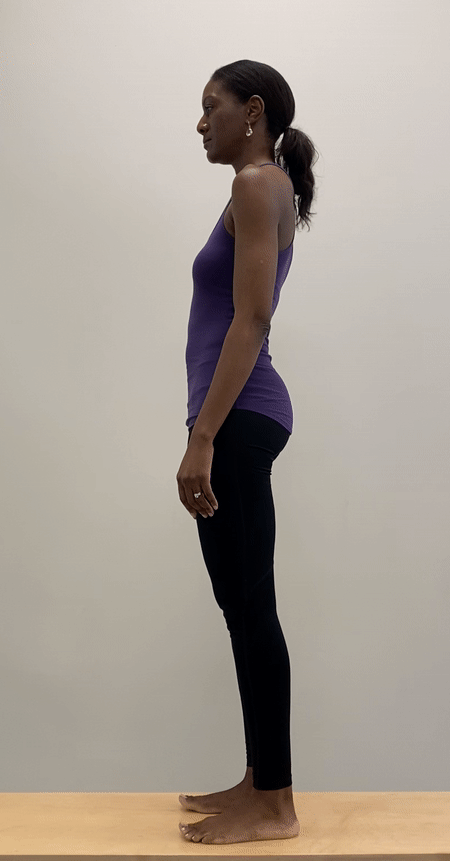
Standing Footwork
Hatcher recommends using this move to energize your hips, legs, and feet after a period of sitting.
Begin by standing with your legs hip-width apart and parallel to one another. Push the balls of your feet into the floor, activating your calf muscles and hamstrings as you slowly lift your heels. While your heels are lifted, bend the knees at about a 30-degree angle and hold this position for two seconds. Lower your heels to the ground and then straighten your legs. Make sure to keep your spine upright by engaging your abs and back muscles and keeping your pelvis in a neutral position. Then do this move in reverse by bending your knees, lifting your heels, straightening your legs, and then lowering your heels to the floor. Repeat the entire process 10 times.

